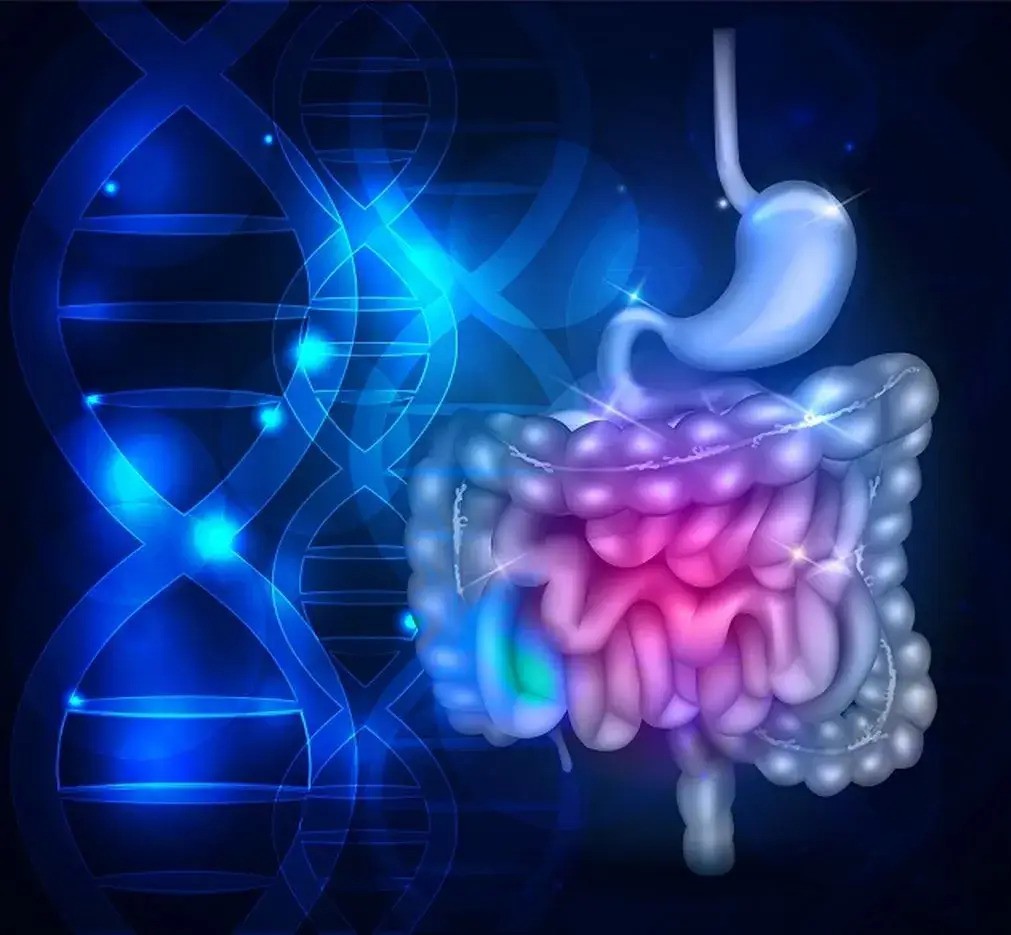
Telemedicine Appointments Are Now Available
Your Trusted Double - Board Certified Gastroenterologist





Gastroesophageal reflux disease, (GERD), occurs when the lower esophageal sphincter (LES) does not close properly and stomach contents leak back and reflux into the esophagus. The LES is a ring of muscle at the bottom of the esophagus that acts like a valve between the esophagus and stomach. The esophagus carries food from the mouth to the stomach.
When refluxed stomach acid touches the lining of the esophagus, it causes a burning sensation in the chest or throat called heartburn. The fluid may even be tasted in the back of the mouth, and this is called acid indigestion.
Occasional heartburn is common but does not necessarily mean one has GERD. Heartburn that occurs more than twice a week may be considered GERD, and it can eventually lead to more serious health problems.
Anyone, including infants, children, and pregnant women, can have GERD.
For more information about this topic, visit:
American College of Gastroenterology (ACG)
American Gastroenterological Association (AGA)
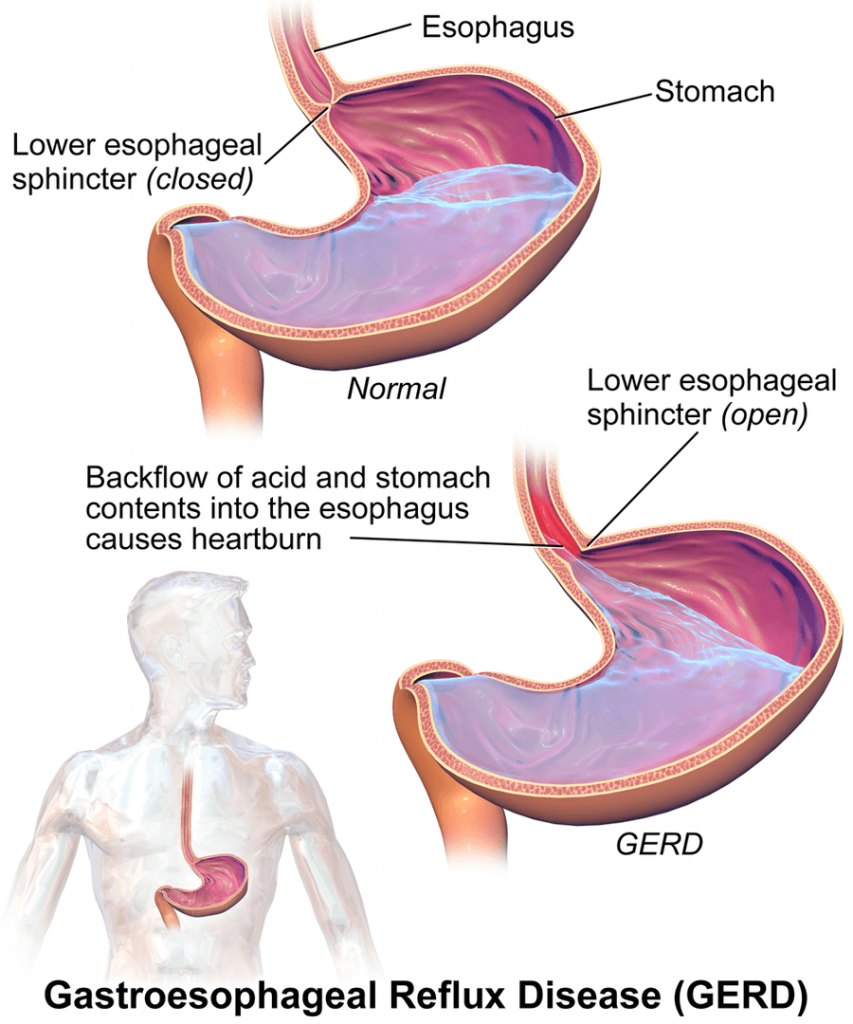
The main symptoms are persistent heartburn and acid regurgitation. Some people have GERD without heartburn. Instead, they experience pain in the chest, hoarseness in the morning, or trouble swallowing. GERD can also cause a dry cough and bad breath.
No one knows why people get GERD. A hiatal hernia may contribute. A hiatal hernia occurs when the upper part of the stomach is above the diaphragm, the muscle wall that separates the stomach from the chest. The diaphragm helps the LES keep acid from coming up into the esophagus. When a hiatal hernia is present, it is easier for the acid to come up. In this way, a hiatal hernia can cause reflux. A hiatal hernia can happen in people of any age; many otherwise healthy people over 50 have a small one. Other factors that may contribute to GERD include:
Despite lifestyle modifications along with the use of anti-reflux medications, some people with gastroesophageal reflux disease (GERD) continue to have reflux symptoms. Approximately 10-40% of people with GERD fail to respond symptomatically, either completely or partially. We may refer to this as refractory GERD and our approach to these patients is discussed below.
Most patients who do not respond to reflux medications have either functional heartburn, or non-erosive reflux disease (NERD). The following are conditions or reasons why someone may not respond to usual treatments.
• IMPROPER DOSING
PPIs should be taken as directed by your physician.
• Compliance
Many patients take their reflux medication only as needed, and although this could be effective for some, if symptoms tend to be persistent or recurrent, then medication should be taken daily as scheduled by the Physician. Altering dosage, splitting the dosing, or adding other medications should be discussed with your Physician.
• Functional Heartburn
This is defined someone having symptoms of GERD, such as retrosternal burning or pain with absence of GERD as a cause both endoscopically and by biopsy, along with the absence of an esophageal motility disorder. Many of these patients have increased esophageal sensitivity to anything topical which may occur with occasional reflux of acid, pepsins or foods, etc.
• Alkaline reflux (non-acid reflux)
Exposure to the esophageal lining of non-acid related materials could cause GERD. This might include certain foods, pepsins, enzymes, caffeine, etc.
• Bile acid reflux
Bile, which is produced in the liver and is necessary to break down and digest our food, is released in the small intestine beyond the stomach. Bile is not acidic, rather alkaline, but it can be very irritating to the gastric and esophageal lining. In certain cases, one might reflux bile upward, in particular in those who have had any type of gastric surgery, decreased gastric emptying time (gastroparesis), abdominal adhesions, or severe constipation. It will not respond to acid reduction therapy such as H2 Blockers or PPIs. Sucralfate has been helpful in this situation.
• H. Pylori
Helicobacter Pylori positive patients increase in gastritis and heartburn, but not esophagitis. If there is gastritis at time of an upper endoscopy, it is now checked routinely.
• NSAIDs
Use of anti-inflammatory medications on a regular basis can not only lead to ulcers but increase symptoms of abdominal pain and GERD.
• Eosinophilic Esophagitis (EOE)
This is a condition seen frequently in young adulthood or in those in their 30s-40s. The esophagus scars down resulting in strictures, rings, furrows, and a decrease in distensibility. As a result, patients often present with difficulty swallowing and not uncommonly a food impaction where they cannot get something they ate to go up or down. EOE is thought to be a localized allergic-type reaction to a particular food group. This is diagnosed at the time of an upper endoscopy and biopsy, and often an esophageal dilation is necessary as well. Food allergy testing can help detect the particular food group that would need to be avoided, and specific medications are used to reduce the localized allergic reaction in the esophagus.
• Delayed gastric empting (Gastroparesis)
Patients with delayed gastric emptying are at high risk for GERD. This could be due to previous gastric or esophageal surgery, underlying medical conditions such as diabetes, certain medications, or it could just occur spontaneously.
If your heartburn does not improve with lifestyle changes or drugs, you may need additional tests.
• A barium swallow radiograph uses x-rays to help spot abnormalities such as a hiatal hernia and severe inflammation of the esophagus. With this test, you drink a solution and then x-rays are taken. Mild irritation will not appear on this test, although narrowing of the esophagus – (stricture), – ulcers, hiatal hernia, and other problems will.
• Upper endoscopy is more accurate than a barium swallow radiograph and may be performed in a hospital or a doctor’s office. The doctor will spray your throat to numb it and slide down a thin, flexible plastic tube called an endoscope. A tiny camera in the endoscope allows the doctor to see the surface of the esophagus and to search for abnormalities. If you have had moderate to severe symptoms and this procedure reveals injury to the esophagus, usually no other tests are needed to confirm GERD. The doctor may use tiny tweezers (forceps) in the endoscope to remove a small piece of tissue for biopsy. A biopsy viewed under a microscope can reveal damage caused by acid reflux and rule out other problems if no infecting organisms or abnormal growths are found.
• In an ambulatory pH monitoring examination, the doctor puts a tiny tube into the esophagus that will stay there for 24 hours. While you go about your normal activities, it measures when and how much acid comes up into your esophagus. This test is useful in people with GERD symptoms but no esophageal damage. The procedure is also helpful in detecting whether respiratory symptoms, including wheezing and coughing, are triggered by reflux.
Surgery
Surgery is an option when medicine and lifestyle changes do not work. Surgery may also be a reasonable alternative to a lifetime of drugs and discomfort. Fundoplication, usually a specific variation called Nissen fundoplication, is the standard surgical treatment for GERD. The upper part of the stomach is wrapped around the LES to strengthen the sphincter and prevent acid reflux and to repair a hiatal hernia. This fundoplication procedure may be done using a laparoscope and requires only tiny incisions in the abdomen. To perform the fundoplication, surgeons use small instruments that hold a tiny camera. Laparoscopic fundoplication has been used safely and effectively in people of all ages, even babies. When performed by experienced surgeons, the procedure is reported to be as good as standard fundoplication. Furthermore, people can leave the hospital in 1 to 3 days and return to work in 2 to 3 weeks.
Endoscopic devices
In 2000, the U.S. Food and Drug Administration (FDA) approved two endoscopic devices to treat chronic heartburn. The Bard EndoCinch system puts stitches in the LES to create little pleats that help strengthen the muscle. The Stretta system uses electrodes to create tiny cuts on the LES. When the cuts heal, the scar tissue helps toughen the muscle. The long-term effects of these two procedures are unknown.
Implant
Recently the FDA approved an implant that may help people with GERD who wish to avoid surgery. Enteryx is a solution that becomes spongy and reinforces the LES to keep stomach acid from flowing into the esophagus. It is injected during endoscopy. The implant is approved for people who have GERD and who require and respond to proton pump inhibitors. The long-term effects of the implant are unknown.
Sometimes GERD can cause serious complications. Inflammation of the esophagus from stomach acid causes bleeding or ulcers. In addition, scars from tissue damage can narrow the esophagus and make swallowing difficult. Some people develop Barrett’s esophagus, where cells in the esophageal lining take on an abnormal shape and color, and which over time can lead to cancer.
Also, studies have shown that asthma, chronic cough, and pulmonary fibrosis may be aggravated or even caused by GERD.
Check Out Our Reviews & Testimonials
At Midwest GI Health we are proud to share our patient referrals from Healthgrades, Vitals, Google and Facebook. Please take some time to see how pleased our patients are with our professionalism and quality of care.
After years and years of stomach issues and having the same simple tests done with no results, I saw Dr. Taormina and he’s actually trying to help figure it all out, new tests…

The staff was very professional and friendly. The exam was explained by a nurse and the Anesthesiologist then came in to explain what she was going to do. Dr Taormina came…

The facility is small enough you don’t feel like a number and big enough you know they have what they need in case of an emergency. Dr Taormina is easy to talk to and answers all questions. Explains everything well, easy to understand. The group of nurses are also great!

Free Resources
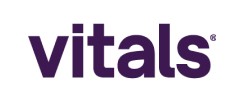
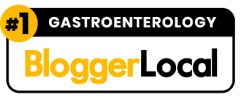

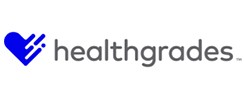
with the Exceptional Service You Deserve!
3601 NE Ralph Powell Rd, Suite A
Lee’s Summit, MO 64064
Phone: (816) 836-2200
Fax: (816) 836-2244
medical marketing & seo by: kcwebdesigner.com | kcseopro.com